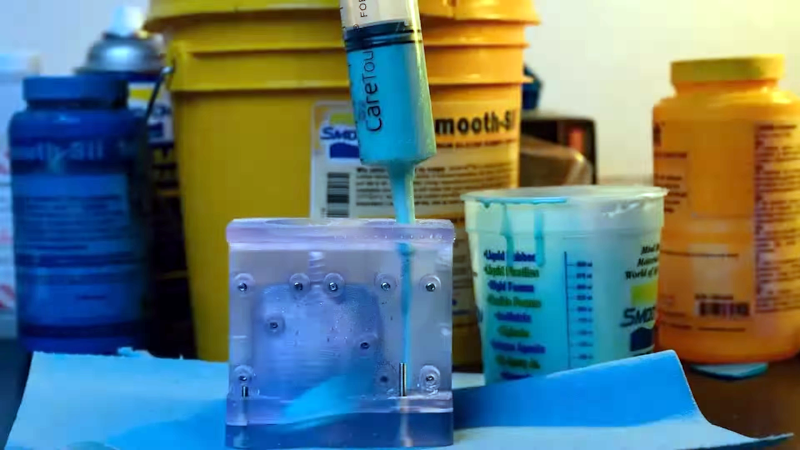Silicone is a useful material for many purposes. Traditionally, creating something out of silicone required injection molding. That’s not difficult, but it does require a good bit of setup. As [Formlabs] points out in a recent video, there are at least three other routes to create silicone parts that utilize 3D printing technology that might fit your application better, especially if you only need a few of a particular item. You can see the video below.
The three methods are either printing silicone directly, printing a mold, casting silicone, or using high-performance elastomers, which are very silicone-like. Of course, as you might expect, some of this is aimed at prompting some of [Formlab’s] products, like a new silicone resin, and you can’t blame them for that.
However, they also cover the basics of printing with elastomers that have similar properties to silicone but are both harder and less expensive. Again, they are talking about their resins, of course.
The video also looks at creating molds for liquid injection and compression molding with putty. There’s also an example of eggshell molds. Granted, if you find any of this interesting, you’ll have some more research to do, but just the wide range of examples and applications will probably give you some ideas.
One thing we didn’t see was how you can augment silicone parts with 3D-printed inserts. Of course, you don’t need 3D printing to make silicone items and molds. It just makes it easier.
















I have done something similar myself. Process is pretty easy thought you might need a few tries to get it work.
Print a positive of what you need (or directly the mold if the shape allow it). Sand and put primer on it. If you did go for the positive option, cast it into alginate. Pour the silicone into the mold. Then use some vibration table and/or vacum chamber.
Pretty good results.
I did something very similar in college I just subtracted the modeled part from a box, split it, and added fill holes and it worked perfectly. If you use a SLA printer and the right orientation you don’t even have to sand it, it just peels off.
Well I saw the commercial for formlabs…..I do 3d printed (FDM) molds for injection/cast silicone molds and have a vacuum pump to degass the silicone before casting resulting in a zero bubble custom silicone part if done right. I’ve considered the formlabs resin printer because I’m curious of resin printing and silicone combined but I’ll save my money and continue making molds with FDM
Do not buy Formlabs printers! We have two Form 2 printers where I work (I teach Intro to 3D Printing and Rapid Prototyping at a local college) and they refuse to provide any support for us. I guess we’re not purchasing thousands of a dollars of components each year.
(and as a corollary to the “don’t buy x”)
Do buy FormLabs printers!
(…if they meet your requirements, there are a lot of decent hobby machines out there if you’re not a business)
Where I work, we started with a Form2 not long after their release and had quite a lot of success with it such that we upgraded to the Form3 and now also have a Form 3L in addition. As we’re not a 3D printing house, we don’t get through tons of materials but do find it works very well in making soldering jigs, construction frames, prototyping some product cases and other random little bits & pieces in product development. We don’t use a great variety of their resins: one of the ‘grey’ variants (forget which one), the high-temp (I think we may skip post-curing as it makes it too brittle) and also the Silicone – directly printing a number of cable strain reliefs for product prototyping before going to a more conventional mass-production (was surprising how durable the 3d printed ones were – to the point where we were considering just using them in the final product as the initial volumes were borderline to being economical)
That video was a rather thin on technical details… CNC Kitchen on the other hand has a video “Design & Cast your own Hotend Silicone Socks!”, https://www.youtube.com/watch?v=O5UiXky85hA, where Stefan shows how he creates 3D model for the mold and the process of casting the silicone.